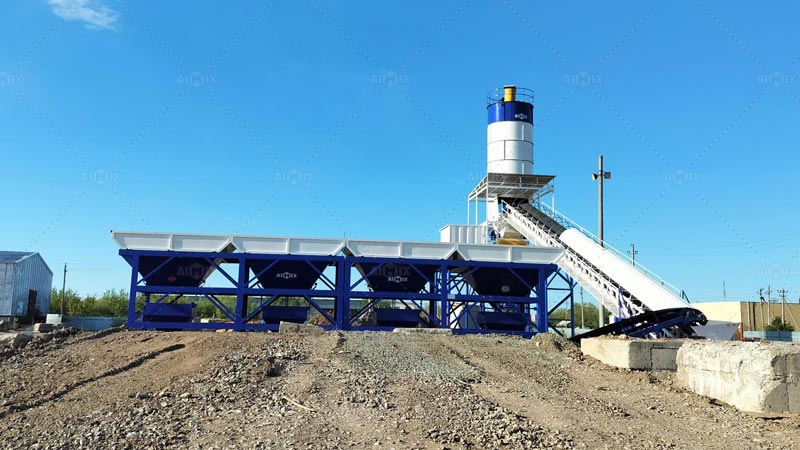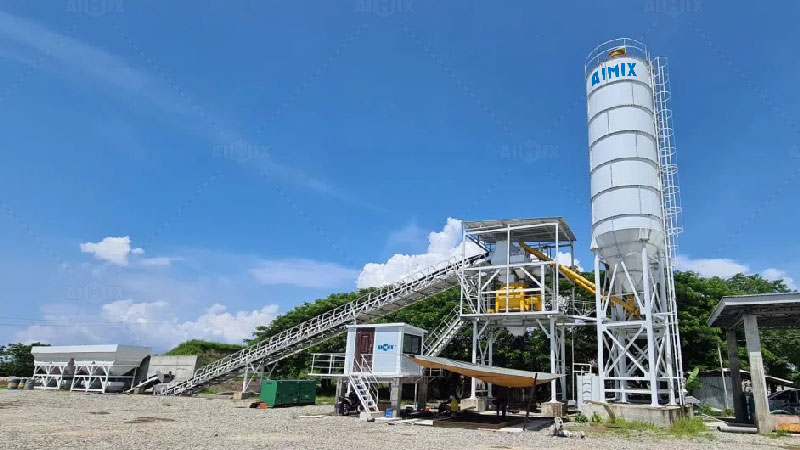Installing a concrete plant is a crucial step in starting a construction or infrastructure project. A well-installed concrete plant ensures efficient production of high-quality concrete, leading to smoother operations and successful project outcomes. Whether you are setting up a stationary or mobile concrete plant, the process requires careful planning and execution. This guide will walk you through the key steps involved in concrete plant installation and setup, providing you with valuable insights for a successful installation.
Initial Planning and Site Selection
Before you begin the installation of your concrete plant(planta de concreto), proper planning is essential. The right location and layout can make all the difference in the efficiency of your plant’s operation.
Factors to Consider for Site Selection
- Proximity to Materials: Choose a site that is close to the source of aggregates, cement, and water. This minimizes transportation costs and ensures a steady supply of materials.
- Accessibility: Ensure the site is accessible to trucks for the delivery of raw materials and the transportation of ready-mix concrete to the project site.
- Zoning and Permits: Verify that the selected site complies with local zoning laws and that you have obtained the necessary permits for plant installation.
- Space Availability: Make sure there is enough space for storage of raw materials, equipment, and room for trucks to move freely.

Choosing the Right Concrete Plant
When looking for a concrete plant for sale(encuentra una planta concreto en venta), it’s important to choose one that suits your project’s needs. Concrete plants come in different types, such as stationary and mobile, each with its own advantages.
Stationary vs. Mobile Concrete Plants
- Stationary Concrete Plant: Ideal for large-scale projects or locations where the plant will remain in place for an extended period. Stationary plants have higher production capacities and are suitable for high-volume concrete production.
- Mobile Concrete Plant: A mobile plant is more versatile and can be moved between job sites. This type of plant is perfect for smaller projects or projects in multiple locations, offering the convenience of easy transport and setup.
Foundation Preparation
Once the location is selected and the plant type is determined, the next step is preparing the foundation for your concrete plant. A strong and stable foundation is critical to ensure the safe and efficient operation of the plant.
Steps for Preparing the Foundation
- Site Survey: Conduct a survey of the site to mark the area where the plant will be installed.
- Excavation: Clear the area of debris and excavate the ground to the required depth, based on the plant’s size and weight. Ensure the surface is level to provide a stable base.
- Base Layer: Lay a base layer of compacted gravel or other suitable materials to support the foundation. This will help distribute the weight of the plant evenly and prevent settling over time.
Plant Assembly and Installation
With the foundation ready, the next step is to assemble and install the components of your concrete plant. This process involves setting up the equipment, connecting the necessary systems, and ensuring everything is aligned properly.
Key Components to Install
- Cement Silo: The cement silo stores the cement used in concrete production. Ensure that the silo is securely installed and connected to the plant’s system for easy loading of materials.
- Batching Unit: The batching unit is responsible for measuring and combining raw materials such as aggregates, cement, and water in the correct proportions. Accurate installation of this unit ensures consistent concrete quality.
- Conveyor System: Install the conveyors that will transport materials to different sections of the plant, ensuring they are properly aligned and secure.
- Mixing Drum: The mixing drum combines all the materials to produce ready-mix concrete. It’s important to position the mixing drum in such a way that it allows for the efficient loading of materials and discharge of concrete.

Electrical and Control System Setup
The control and electrical systems are the backbone of your concrete plant, automating various functions and ensuring safety during operations.
Steps to Install the Electrical System
- Power Supply: Ensure the plant has a reliable power source. For stationary plants, direct power lines are often used, while mobile concrete plants(plantas de concreto móviles) may require generators if the site lacks an electrical connection.
- Control Panel Installation: Install the control panel that will allow operators to monitor and adjust various aspects of the concrete production process. Make sure that the panel is accessible and easy to use for the operators.
- System Testing: After installation, test the entire system to ensure everything is working properly. This includes testing electrical connections, automated controls, and safety shutdown features.
Testing and Calibration
Before starting full-scale production, it’s essential to test and calibrate the plant to ensure accuracy in the batching and mixing processes.
Testing and Calibration Steps
- Dry Run: Run the plant without materials to ensure all components are functioning correctly. This allows you to check the operation of conveyors, mixers, and other equipment.
- Batching Accuracy: Calibrate the batching unit to ensure the correct proportions of materials are measured and mixed. This is crucial for achieving consistent concrete quality.
- Concrete Testing: Produce a small batch of concrete and test it for quality. Ensure the mix meets the required specifications before proceeding with larger batches.
Maintenance and Safety Considerations
Maintaining your concrete plant of AIMIX Group Co., LTD is critical to its longevity and performance. Additionally, safety must be a top priority to protect workers and prevent accidents.
Regular Maintenance
- Lubrication: Ensure all moving parts, such as mixers and conveyors, are regularly lubricated to prevent wear and tear.
- Cleaning: Clean the plant regularly to remove any buildup of materials that could clog equipment or reduce efficiency.
- Component Inspections: Inspect the plant components periodically for signs of damage or wear. Replace any faulty parts to prevent downtime.
Safety Measures
- Training: Ensure that all workers operating the concrete plant are trained on the equipment and understand safety protocols.
- Emergency Protocols: Establish emergency shutdown procedures and make sure workers are aware of what to do in case of an equipment malfunction.
- Personal Protective Equipment (PPE): Make sure that all workers wear the appropriate PPE, including hard hats, gloves, and safety glasses, while working on or around the plant.
Conclusion
Setting up a concrete plant, whether stationary or mobile, involves careful planning, site preparation, assembly, and testing. By following these steps and adhering to best practices, you can ensure a smooth installation process and efficient operation. When searching for a concrete plant for sale, choose a reliable supplier who can provide guidance during the installation phase and offer ongoing support. Proper setup and maintenance will ensure your plant operates efficiently, delivering high-quality concrete for your projects for years to come.